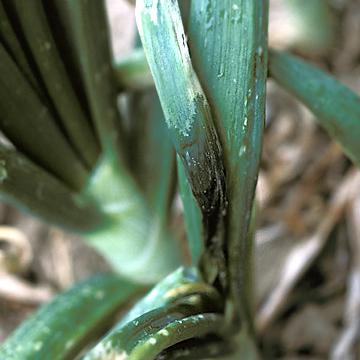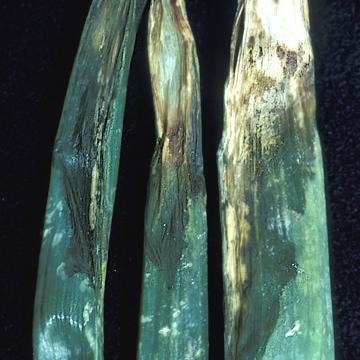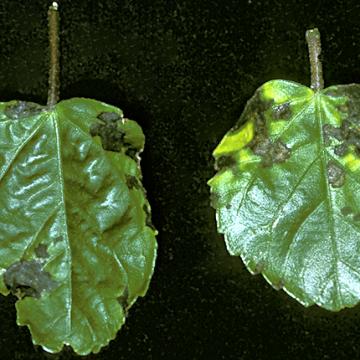DISEASE: Bacterial flower stalk and leaf necrosis
HOST: Onion
Dark, rotted areas of stalk and leaves caused by systemic invasion of the pathogen.
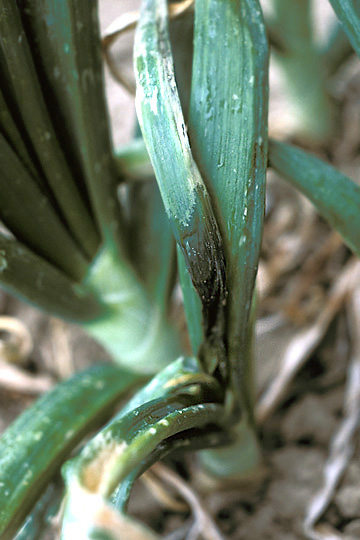
Bacterial flower stalk and leaf necrosis | Onion
DISEASE: Bacterial flower stalk and leaf necrosis
HOST: Onion (Allium cepa)
PATHOGEN: Pseudomonas marginalis pv. marginalis
SOURCE: S. Mohan
DISEASE: Bacterial flower stalk and leaf necrosis
HOST: Onion
Gray-brown rot of onion after inoculation. Disease starts as small, water-soaked lesions that later develop into slimy, gray-brown rot. The disease progresses downward from the stalk and may rot the entire bulb.
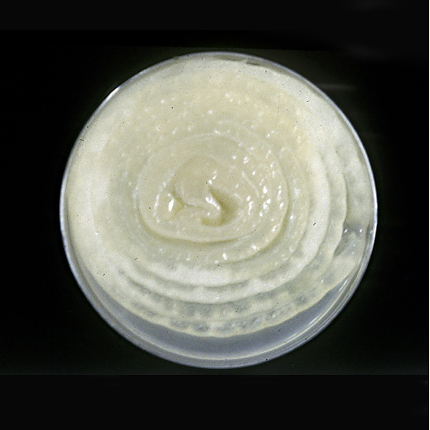
Bacterial flower stalk and leaf necrosis | Onion
DISEASE: Bacterial flower stalk and leaf necrosis
HOST: Onion (Allium cepa)
PATHOGEN: Pseudomonas marginalis pv. marginalis
SOURCE: R. Gitaitis
DISEASE: Bacterial flower stalk and leaf necrosis
HOST: Onion
Leaves with necrosis and rot. The common name for this disease is the same as those used for two other diseases. Also, another common name for this disease is bacterial soft rot.
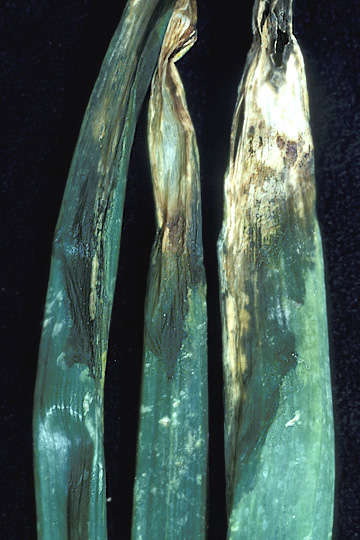
Bacterial flower stalk and leaf necrosis | Onion
DISEASE: Bacterial flower stalk and leaf necrosis
HOST: Onion (Allium cepa)
PATHOGEN: Pseudomonas marginalis pv. marginalis
SOURCE: S. Mohan
DISEASE: Bacterial leaf spot
HOST: Hibiscus
Hibiscus leaves with large, black spots with chlorosis occurring near some lesions.

Bacterial leaf spot | Hibiscus
DISEASE: Bacterial leaf spot
HOST: Hibiscus (Hibiscus sp.)
PATHOGEN: Xanthomonas campestris pv. esculenti
SOURCE: R. Raabe
DISEASE: Bacterial soft rot
HOST: Cabbage
Rot of cabbage caused by Pseudomonas marginalis pv. marginalis. Rot caused by P. viridiflava has similar symptoms of water-soaking and blackening of cabbage heads. Both diseases occur mainly during the winter season.

Bacterial soft rot | Cabbage
DISEASE: Bacterial soft rot
HOST: Cabbage (Brassica oleracea var. capitata)
PATHOGEN: Pseudomonas marginalis pv. marginalis
SOURCE: M. Goto


